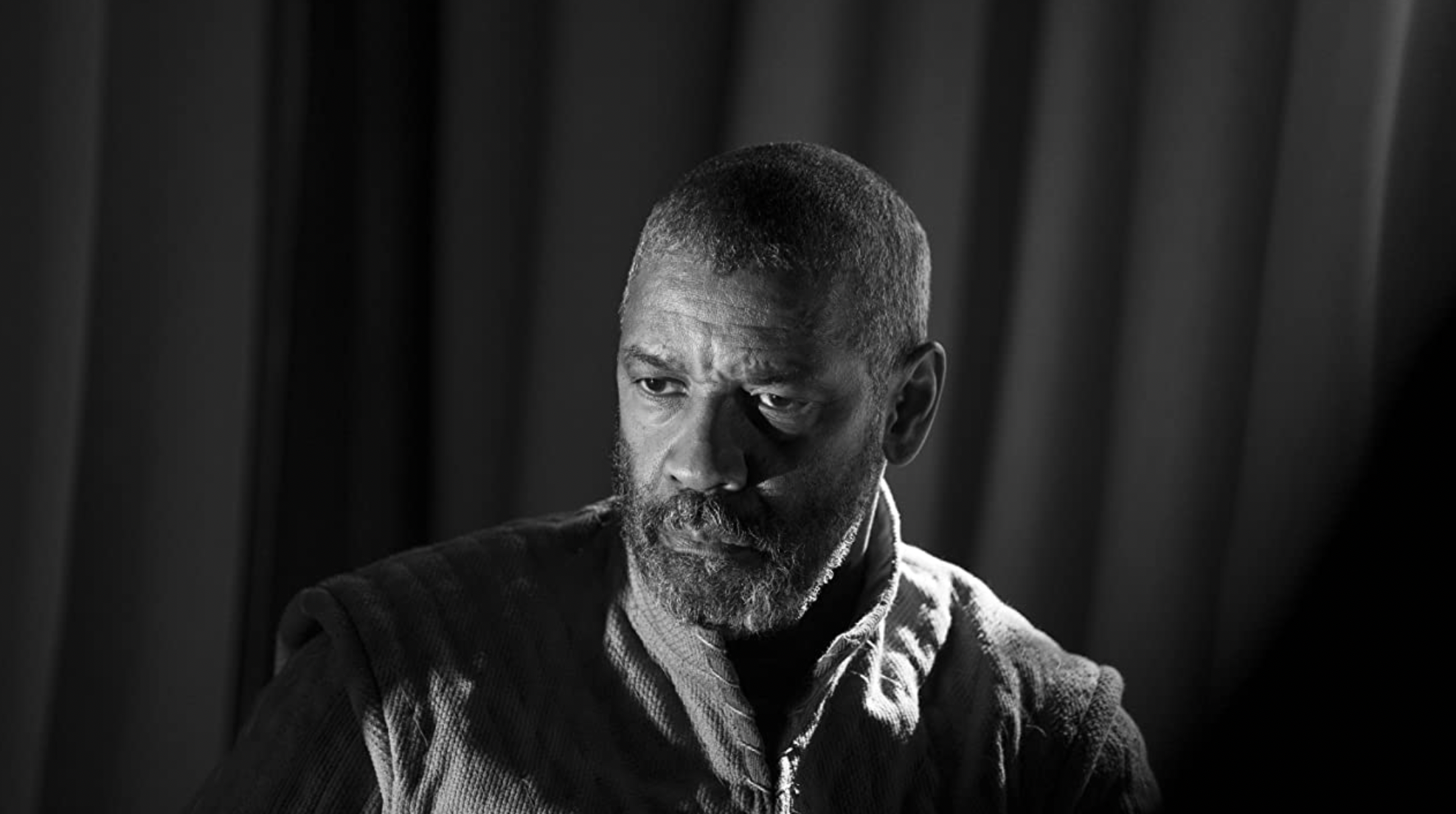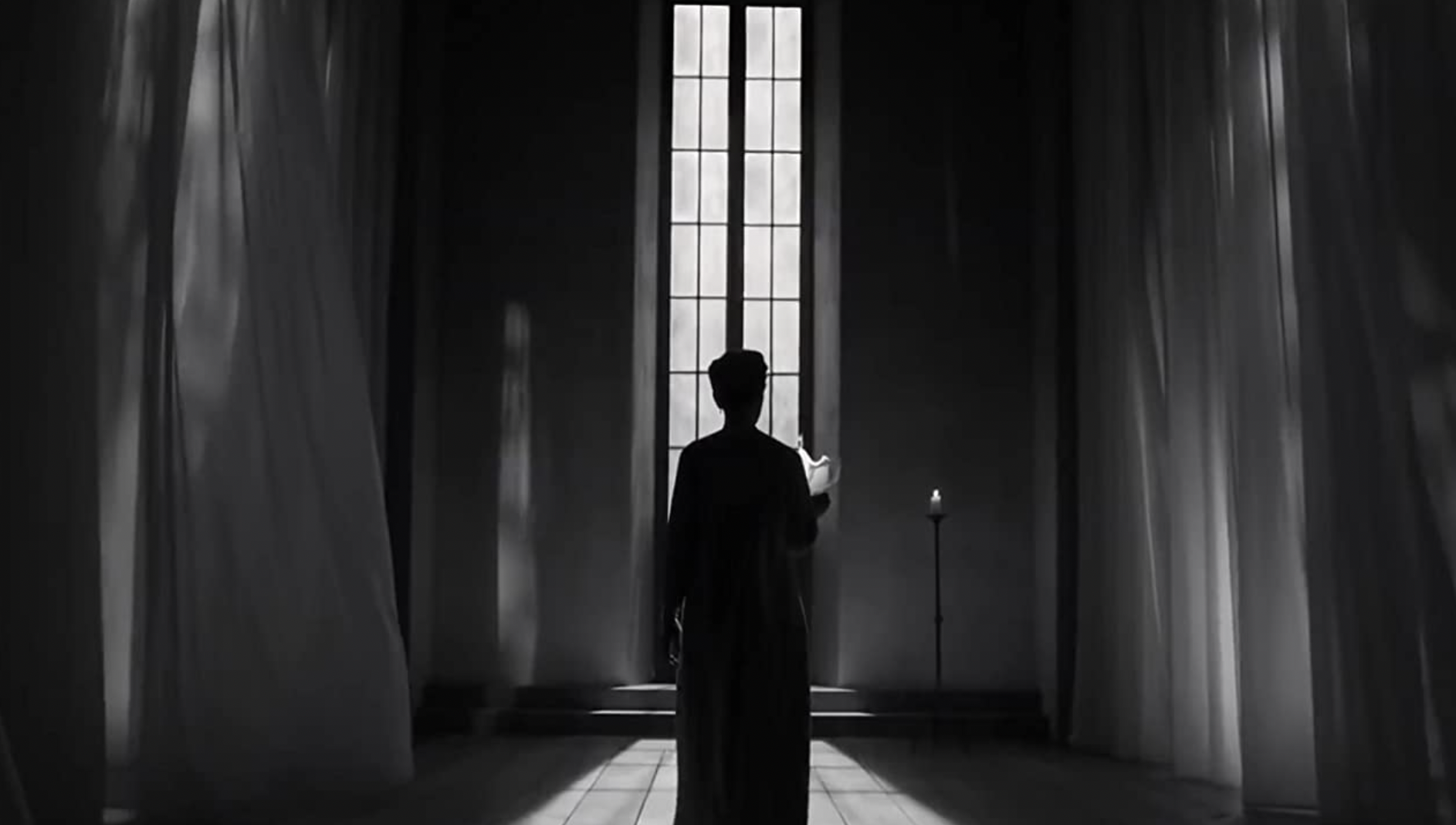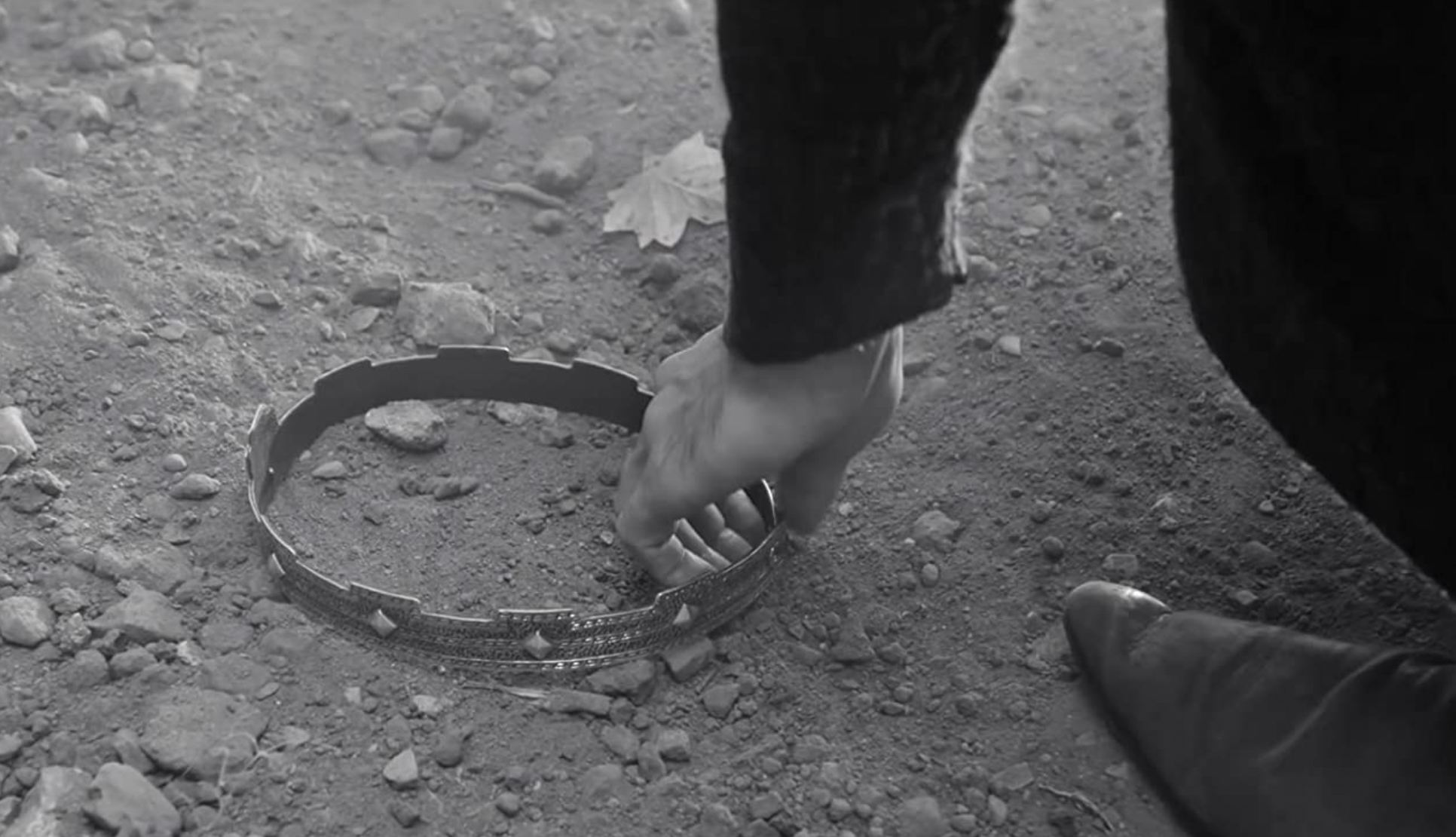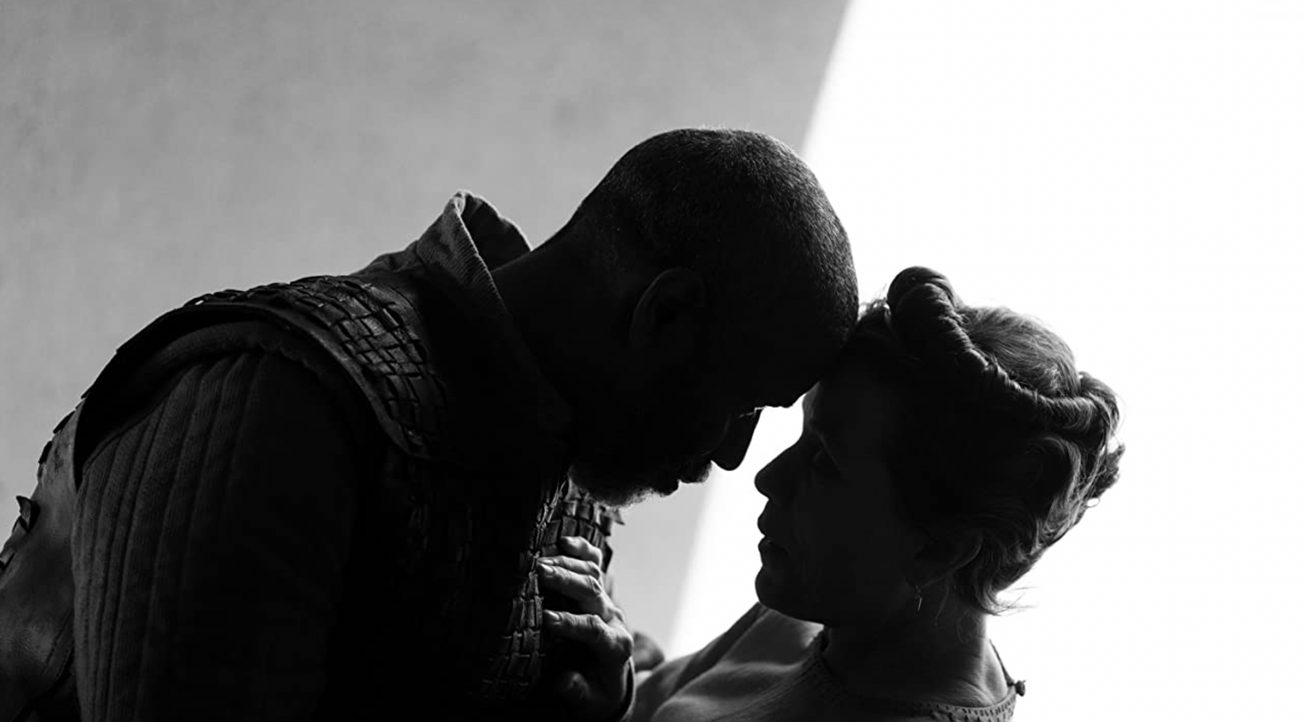By Jasper Price, Third Year, Theatre & Performance Studies
By the pricking of my thumbs, something decent this way comes. Joel Coen’s shadowy retelling of Shakespeare’s classic tragedy is a study of minimalist filmmaking. A piece that, at first glance lulls like a bubbling cauldron, soon shrieks like a crow into cinematic anxiety.
There have been countless adaptations of Macbeth throughout recorded time, be it in Theatre, Film or art. With each of these adaptations, the artist has tried to bring something new to the tale. Justin Kurzel’s 2015 film, is a key example. Here he presented Macbeth as an epic war film, drenched in blood and huge cinematic spectacle. Or William Oldroyd’s retelling; Lady Macbeth (2016), which sought to bring a new angle on the iconic female lead. It’s safe to say that the story has been revived, retold and reproduced in every way possible.

So what is different about Joel Coen’s new version? Well to begin with, he has compacted the visual scope into a 4:3 aspect ratio. We are made to watch the tragedy unfurl through a square box, which creates a very claustrophobic environment. This minimalizing makes the piece seem more dramatic, as though what is trying to be achieved is a combination of theatre and cinema.
This starkness is also brought by the Mise-en-scène. Stefan Dechant’s angular set evokes the style of Escher, with sharp walls and grand, straight-lined staircases.
The film’s lack of colour is very effective in making the already murky even more so. The black void of the witches’ cauldron to the pale white face of lady Macbeth, the ascetic really explores the relationship between light and dark. The music is similarly gloomy. Burwell’s score creates the eerie canvas on which the dialogue can be painted. Low rumbles of strings and distant echoes of piercing brass, which have become hallmarks of all things A24, are cast back allowing the text to creep in.

Standout performances in this piece are many. Francis McDormand’s uncompromising portrayal of Lady Macbeth is very well rounded, and her relationship with Denzel Washington’s lead is suitably dark and mysterious. Corey Hawkins as Macduff also stood out, with Hawkins’ determination and fearlessness being highly apparent, particularly in his final fight scene with Macbeth. Brendan Gleeson gave a stout and dignified take on king Duncan, and Alex Hassel’s Ross had an eerie uncanniness to it.
Denzel Washington took the lead role with respect and dignity. You believe that Macbeth is a retiring soldier, after years of war returning home. Washington also portrays Macbeth’s madness well; there is uncomfortable humour in his speeches towards the end of the play. The actor is clearly well versed in the dialogue of Shakespeare and his background in theatre stands out here.

However, the performance that both captured and tortured me the most was Katheryn Hunter’s portrayal of the witches. This was a moment of originality that I feel was largely missing from the rest of the piece. Hunter plays all three weird sisters, contorting her body and distorting her vocal delivery to create varied personas. It’s a remarkable performance from Hunter; the way she moves her limbs is unhuman and put against the backdrop of gloomy fog, her scenes are deeply unsettling.
Overall, I think Coen has successfully attempted to make an even darker version of Macbeth. However, after 400 years of the play, all the perfumes of Arabia wouldn’t wash off its past incarnations. Perhaps it’s time for the story of Macbeth to have its final curtain.
Featured Image: IMDB
Did you find your cauldron bubbling in The Tragedy of Macbeth?









